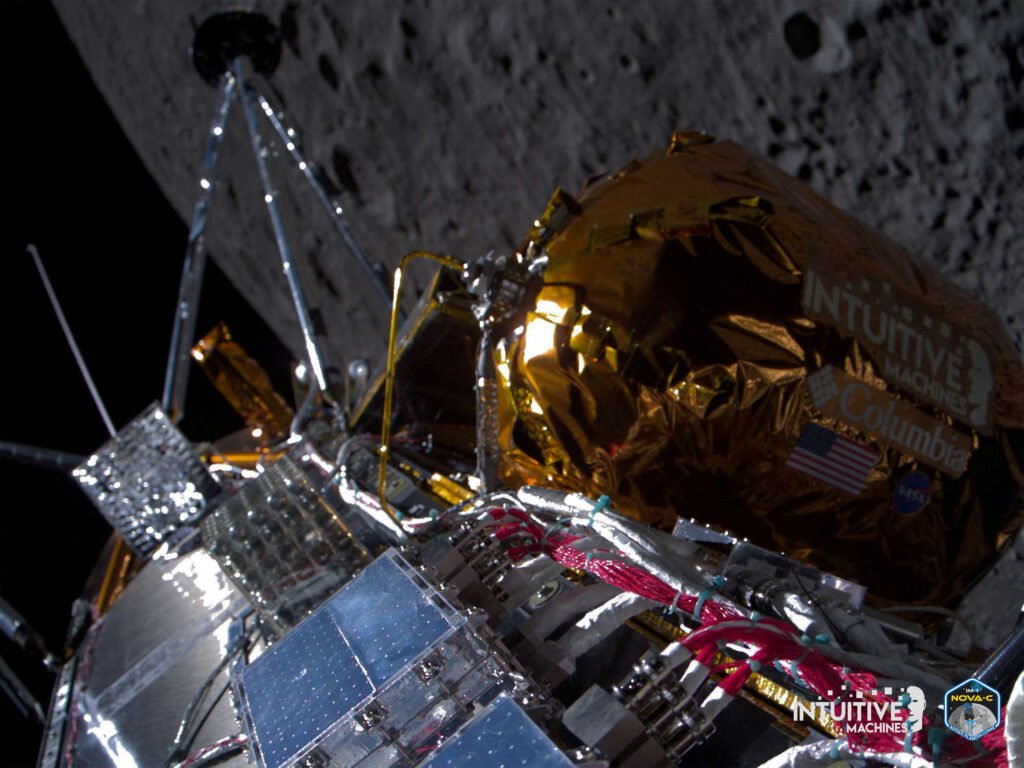Odysseus, the first U.S. spacecraft to grace the lunar surface in half a century, has succumbed to the harsh conditions of the moon’s frigid night, marking the end of its primary mission.
In a bittersweet turn of events, Odysseus, the first U.S. spacecraft to grace the lunar surface in half a century, has succumbed to the harsh conditions of the moon’s frigid night, marking the end of its primary mission. The spacecraft, built and operated by Intuitive Machines, encountered a setback shortly after its touchdown one week ago, which hindered its operations and scientific objectives.
Intuitive Machines, based in Texas and contracted by NASA for the Odysseus project for $118 million, announced that the spacecraft transmitted its final farewell message before going dark in the moon’s south pole region. Fondly referred to as “Odie” by its engineers, the spacecraft displayed unexpected resilience despite the challenges it faced.
Efforts to revive Odysseus remain ongoing, with Intuitive Machines programming the craft to establish contact with ground control in Houston once it receives adequate solar power upon the next lunar sunrise in approximately three weeks. Despite initial projections suggesting Odysseus would deplete its battery power on Wednesday night, the spacecraft remained operational until Thursday morning, allowing for a final data transmission to Earth.
Intuitive Machines, whose stock experienced volatile fluctuations throughout the mission, saw a net increase of about 20% in its market value compared to pre-launch levels. The Nova-C-class lander, standing at 13 feet tall and resembling a hexagonal cylinder, embarked on its lunar journey on February 15th aboard a Falcon 9 rocket provided by SpaceX, founded by Elon Musk.
The Odysseus mission encountered a nail-biting descent culminating in a lopsided touchdown attributed to a last-minute navigational glitch. Human error, specifically the failure to manually unlock a safety switch pre-launch, led to the activation issue of the vehicle’s range finders. While this improvised solution likely averted a crash, it resulted in a tilted landing, hindering operational capabilities.
Despite challenges such as damaged landing gear and misaligned solar panels, Odysseus managed to deliver valuable data from all six of its science payloads. Both Intuitive Machines and NASA celebrated the success of the mission, emphasizing its significance as the first commercially manufactured and operated lunar landing by the United States, setting the stage for future Artemis program endeavors.
Odysseus’s controlled descent marked a milestone in lunar exploration, reigniting interest in manned missions to the moon. As the first U.S. spacecraft to achieve such a feat since the Apollo era, Odysseus heralds a new era of lunar exploration, paving the way for future scientific endeavors and human presence on Earth’s celestial neighbor.
